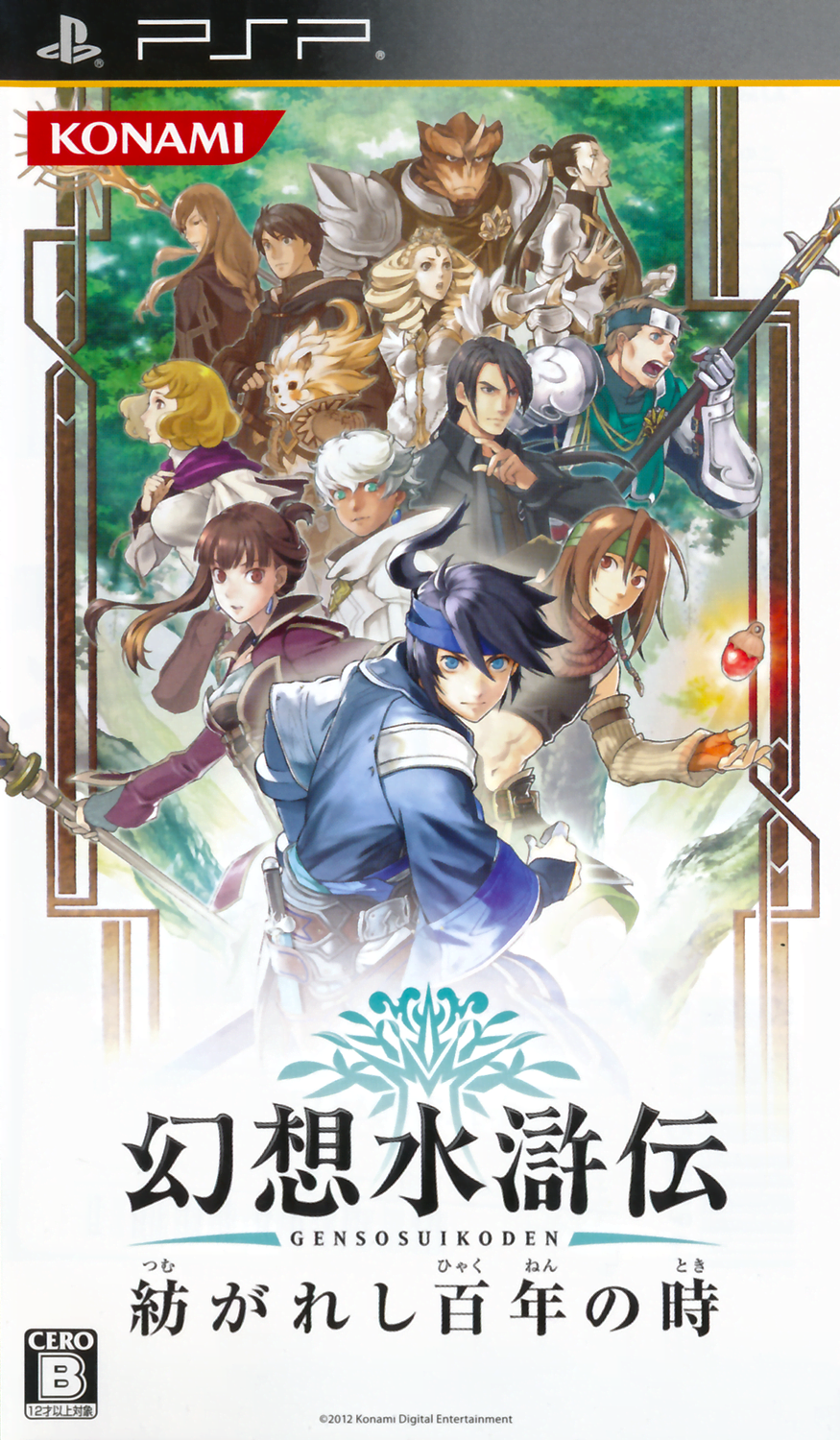| Genso Suikoden Tsumugareshi Hyakunen no Toki {{{jpname}}}, {{{roname}}} | |
[[File: .png|x340px]] .png|x340px]]Sony PSP Japanese cover art | |
| Developer | GAE |
|---|---|
| Publisher | Konami Digital Entertainment |
| Released | Sony PSP |
| Platforms | Sony PSP |
| Sales | |
| Predecessor | Pachislot Genso Suikoden |
| Successor | None yet announced |
Gensōsuikoden Tsumugareshi Hyakunen no Toki (幻想水滸伝 紡がれし百年の時, Gensōsuikoden Tsumugareshi Hyakunen no Toki) is the fourteenth installment of the Suikoden series, designed and released for the Sony PlayStation Portable.
It tells the story of the (player named) protagonist and his two friends, who are thrown back in time 100 years by a mysterious boy. While navigating three separate time periods; the present, the world of a century ago and the world of two centuries past, they must train with the heroes of antiquity and face the Teras Pharma, powerful monsters which rise every century and attempt to destroy the world.
Gameplay
A traditional role-playing game in much the same vein as its predecessors, Genso Suikoden Tsumugareshi Hyakunen no Toki features the return of the six-person party system, last seen in Suikoden V. Parties are arranged in formation on a 3x3 grid and each available character falls into one of eight classes. Sub-jobs can be taken on and skills can be taught between classes across time frames.
In a manner similar to Suikoden III, characters can be grouped up. Unlike Suikoden III, this does not push a character into an AI-informed support role, full player control is maintained. Also unlike Suikoden III, the grouping is not limited to two characters only. The advantage of grouping party members is to build bonds between your characters, giving them boost capabilities when linked together in battle, allow skills to be shared and learned, and unlock scenes at your headquarters, which can eventually lead to the learning of sub-classes and extra abilities.
As with Suikoden Tierkreis, weapons and armor are purchased to equip to your character, but these pieces of equipment can then be improved and customized further at a blacksmith or armorer. Magicite is used in the casting of spells but function more as an MP analogue than as a substitute for runes or the Mark of the Stars as magic is inherent to the characters class. Spells don't have a default element, this only changes based on the magicite or malicite used to cast the spell.
Random battles are now initiated by making contact with the enemy on the field. There are no penalties for being caught unawares nor advantages for initiating combat from behind.
Plot Overview
The game told the story of the hero, a student of the Blue Flash Style of swordplay and descendant of the local hero of Therbe Village. The emergence of the feared centennial monsters thrusts he and his friends into an encounter with the mysterious Zephon and the Era Tree, allowing the group to travel back in time 100 years and learn from the heroes of the past.
After visiting the Holy City of Thaksis to confirm the emergence of the centennial monsters to the Holy Empire of Ionia, the hero witnesses the rise of the Vermilion Axe, a powerful insurgency seeking vengeance and the overthrow of Ionia for its decades of violence, plots, and power projections.
Gaining more and more allies, including the tactician Regius, the group must known maneuver between an insurgency that will brook no cooperation, however benign, with Ionia and a powerful theocracy dedicated to uniting the land under its banner to fight the Teras Pharma, all while traveling back in time more and more to try and learn the truth and discover what's been forgotten, what's been buried, and why.
The game has two endings depending on whether all 108 Stars are recruited throughout the game. Unlike many Suikoden games, the two endings affect more than just main cast. Almost every Starbearer in the game has an alternate ending depending of whether all 108 were recruited or not.
Legacy
The game received a 30 out of 40 rating from Weekly Famitsu magazine based on individual reviews of 8, 7, 8, and 7, marking the game as a Silver Hall of Fame candidate, as well as a 78.75 out of 100 average based on scores of 80, 80, 80 and 75 from Dengeki PlayStation magazine.
Genso Suikoden Tsumugareshi Hyakunen no Toki would sell over 90,000 copies in Japan before falling out of the charts.
Gallery
-
NTSC-J box art
